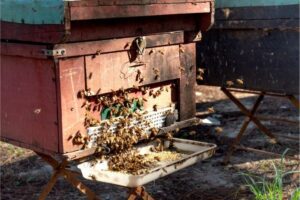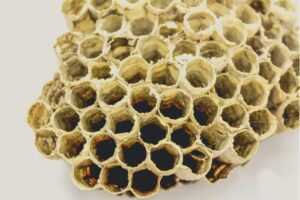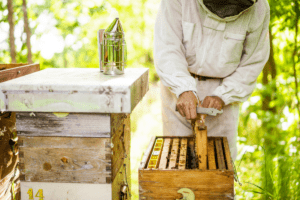Beekeeping, an age-old practice dating back thousands of years, is undergoing a revolutionary transformation. Historically, beekeepers relied on traditional methods to manage their hives and harvest honey. Today, however, advancements in technology are redefining how beekeeping is conducted, making it more efficient, productive, and sustainable. The integration of cutting-edge technologies such as artificial intelligence, robotics, and data analytics is not only enhancing the productivity of beekeeping but also addressing critical challenges faced by the industry, such as colony collapse disorder and the impacts of climate change.
The Crucial Role of Bees in Agriculture and the Environment
Bees play a pivotal role in both agriculture and the broader ecosystem. As primary pollinators, they are essential for the production of many fruits, vegetables, and nuts, contributing significantly to global food security. According to the Food and Agriculture Organization (FAO), approximately 75% of the world’s crops benefit from pollination by bees. Beyond agriculture, bees are crucial for maintaining biodiversity. Their pollination activities support the reproduction of various plant species, which in turn sustains numerous wildlife habitats. The decline in bee populations, therefore, poses a serious threat not only to agriculture but also to the health of our natural environment.
Purpose of the Article
This article aims to explore the future of beekeeping by delving into the innovative technologies and emerging trends that are shaping the industry. From advanced hive monitoring systems and the use of drones to artificial intelligence and sustainable practices, we will examine how these developments are revolutionizing beekeeping. The goal is to provide a comprehensive overview of how these innovations are enhancing hive management, improving honey production, and supporting the health and sustainability of bee populations. By understanding these advancements, beekeepers, researchers, and enthusiasts can better prepare for the future of beekeeping and contribute to the preservation of this vital practice.
Hive Monitoring Technologies
Temperature and Humidity Sensors
Modern beekeeping increasingly relies on sophisticated sensors to monitor hive conditions. Temperature and humidity sensors are crucial for maintaining optimal conditions within the hive, which is vital for bee health and honey production. These sensors can provide real-time data, allowing beekeepers to detect any deviations from ideal conditions that could indicate potential problems such as overheating or excessive moisture. This proactive approach helps in preventing issues that could lead to colony stress or disease.
Acoustic Monitoring
Acoustic monitoring is another innovative technology being used in beekeeping. By analyzing the sounds produced within a hive, beekeepers can gain insights into the health and activity levels of the colony. For example, changes in the buzzing patterns may signal the presence of diseases or pests. Acoustic sensors can also help in determining the queen’s presence and her productivity by listening to the distinct sounds she makes. This non-invasive monitoring method provides valuable information without disturbing the bees.
Cameras and Computer Vision
The use of cameras and computer vision technology is revolutionizing hive inspections. High-resolution cameras installed in and around hives can capture detailed images and videos of bee activity. Computer vision algorithms can then analyze these images to assess hive conditions, identify diseases, and monitor bee behavior. This technology enables remote inspections and real-time analysis, making it easier for beekeepers to manage multiple hives efficiently.
Use of Drones in Beekeeping
Hive Inspection
Drones are becoming an essential tool in modern beekeeping. They can be used for inspecting hives, especially in hard-to-reach areas. Equipped with cameras, drones can provide aerial views of the hives and help beekeepers assess their condition without opening them. This minimizes disturbance to the bees and reduces the risk of introducing diseases or pests.
Mapping Bee Flight Patterns
Drones can also be utilized to map bee flight patterns. By analyzing the flight paths of bees, researchers can gain insights into foraging behavior and hive dynamics. This information can be used to improve hive placement and optimize pollination strategies, leading to better honey yields and more effective management of bee colonies.
Natural Pesticide Distribution
In addition to inspection and mapping, drones can be employed for the distribution of natural pesticides and treatments. These drones can precisely deliver treatments to hives, ensuring even coverage and reducing the amount of pesticide needed. This targeted approach minimizes the impact on non-target organisms and supports sustainable beekeeping practices.
Artificial Intelligence and Big Data
Data Analysis for Disease and Pest Prediction
Artificial intelligence (AI) and big data are transforming beekeeping by enabling predictive analysis. AI algorithms can analyze vast amounts of data collected from sensors, cameras, and other monitoring tools to predict potential disease outbreaks and pest infestations. By identifying patterns and trends, beekeepers can take preventive measures before issues become severe, improving colony health and productivity.
Honey Production Optimization
AI can also optimize honey production by analyzing factors such as hive conditions, bee behavior, and environmental variables. By processing this data, AI can recommend adjustments to management practices that enhance honey yield and quality. This data-driven approach helps beekeepers make informed decisions and improve overall hive performance.
Hive and Resource Management
Big data analytics can aid in efficient hive and resource management. By integrating data from various sources, beekeepers can better understand hive health, predict resource needs, and manage multiple hives more effectively. This holistic view enables more strategic planning and resource allocation, leading to more sustainable beekeeping practices.
Automation and Robotics
Honey Collecting Robots
Robotic technology is making strides in honey collection. Robots designed for this purpose can automate the extraction process, reducing the need for manual labor. These robots can handle delicate tasks such as uncapping frames and extracting honey with precision, ensuring minimal waste and damage to the hive.
Hive Maintenance Robots
Robots are also being developed for hive maintenance tasks. These robots can perform tasks such as inspecting hive components, cleaning frames, and repairing damaged equipment. By automating these labor-intensive tasks, beekeepers can focus on more strategic aspects of hive management and reduce the physical strain associated with traditional beekeeping practices.
Automated Feeding Systems
Automated feeding systems are another innovation in beekeeping. These systems can provide supplemental nutrition to bees on a schedule, ensuring they receive the necessary resources for optimal health and productivity. Automated feeders can be controlled remotely and adjusted based on real-time data, making it easier to manage bee nutrition.
Sustainable Beekeeping Trends
Ecological Beekeeping Practices
Sustainable beekeeping practices are gaining momentum as beekeepers seek to minimize their environmental impact. Ecological beekeeping focuses on methods that support bee health and biodiversity. This includes using organic treatments, planting pollinator-friendly plants, and avoiding practices that harm the environment. These practices help ensure that beekeeping contributes positively to the ecosystem.
Impact of Climate Change and Adaptation
Climate change poses significant challenges for beekeeping. Shifts in temperature, precipitation patterns, and the frequency of extreme weather events can affect bee health and forage availability. Beekeepers are adapting to these changes by employing strategies such as adjusting hive placement, providing supplemental feeding, and selecting resilient bee strains. These adaptations help mitigate the impacts of climate change on bee populations.
Supporting Biodiversity through Urban Beekeeping
Urban beekeeping is emerging as a trend that supports biodiversity and brings beekeeping closer to communities. Urban beekeepers often engage in initiatives such as planting bee-friendly gardens, promoting local honey production, and educating the public about the importance of bees. This urban approach helps increase awareness and support for beekeeping while enhancing local biodiversity.
Digital Education and Training
Online Platforms for Beekeepers
Online platforms are revolutionizing beekeeping education and training. These platforms offer resources such as courses, webinars, and forums where beekeepers can learn new techniques, share experiences, and stay updated on the latest trends. Access to online education makes it easier for both novice and experienced beekeepers to enhance their knowledge and skills.
Virtual and Augmented Reality Training
Virtual and augmented reality (VR and AR) technologies are providing immersive training experiences for beekeepers. VR can simulate hive inspections and management scenarios, allowing users to practice skills in a risk-free environment. AR can overlay information and instructions on real-world hive inspections, enhancing learning and application of techniques.
Virtual Communities and Knowledge Sharing
Virtual communities are a valuable resource for beekeepers to connect and collaborate. Online forums, social media groups, and specialized networks enable beekeepers to share knowledge, ask questions, and seek advice. These communities foster a sense of camaraderie and support, helping beekeepers navigate challenges and stay informed about industry developments.
Innovations in Honey Production and Marketing
Traceability and Blockchain
Traceability and blockchain technology are enhancing the transparency of honey production and supply chains. Blockchain can provide a secure and verifiable record of honey’s journey from hive to market, ensuring authenticity and quality. This technology helps prevent fraud and supports fair trade practices, giving consumers confidence in the honey they purchase.
New Apicultural Products
Innovations in beekeeping are leading to the development of new apicultural products. Beyond traditional honey, beekeepers are exploring products such as bee pollen, royal jelly, and propolis. These products offer additional revenue streams and cater to growing consumer interest in natural and health-oriented products.
Digital Marketing for Beekeepers
Digital marketing strategies are becoming essential for beekeepers to reach a broader audience. Online platforms, social media, and e-commerce websites provide opportunities for beekeepers to market their honey and other products effectively. By leveraging digital tools, beekeepers can build their brand, engage with customers, and expand their market presence.
This comprehensive overview of emerging technologies and trends in beekeeping highlights how innovation is shaping the future of the industry. By embracing these advancements, beekeepers can enhance their practices, support bee health, and contribute to a more sustainable future for apiculture.

Hi, I’m James Stevan, an avid beekeeper with over a decade of experience in apiculture. My passion for bees drives me to share practical tips and insights on sustainable beekeeping. Join me as we explore the fascinating world of bees and their crucial role in our ecosystem.




